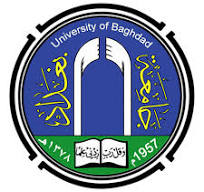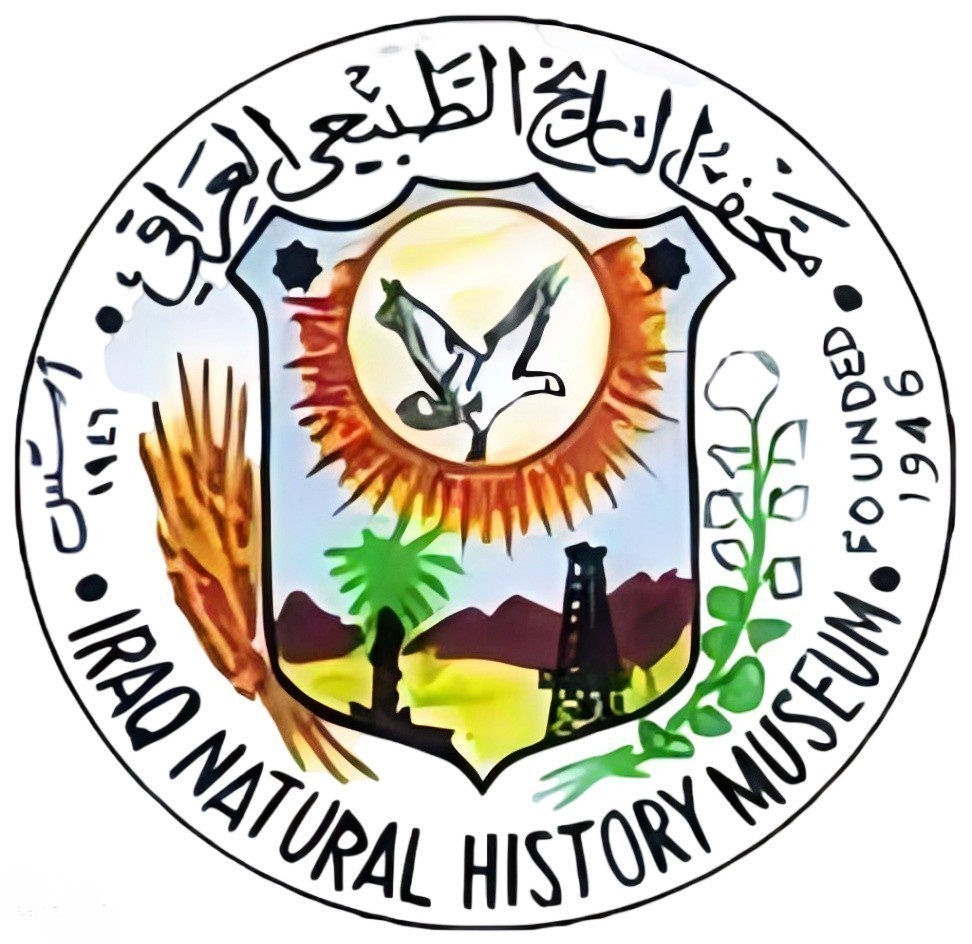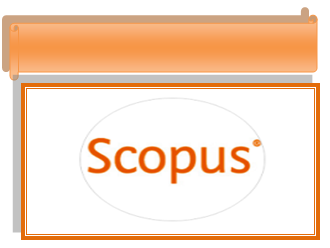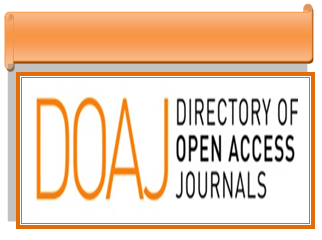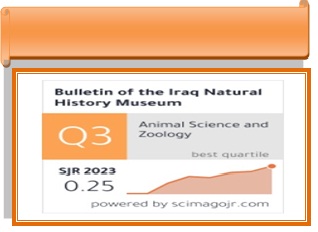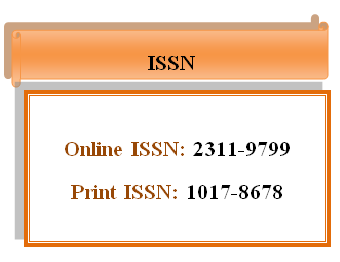OCCURRENCE AND REDESCRIPTION OF THRYSSA SETIROSTRIS (BROUSSONET, 1782) (CLUPIFORMES, ENGRAULIDAE) FROM IRAQI MARINE WATER
DOI:
https://doi.org/10.26842/binhm.7.2018.15.2.0123Abstract
Nine fish specimens of Thryssa setirostris (Broussonet, 1782) were collected from the Arabian Gulf, during the period from July 2015 to April 2016. Because of the scarcity of this fish and overlapping and ambiguous of its taxonomic characters with other Thryssa spp., a detailed taxonomic study was conducted. The present study includes the most important meristic and morphometric characteristics.
The mean of the total length of the specimens was 149.67 mm; dorsal fin consists of 12 rays, anal fin with 34-37 rays and pectoral fin with 12-13 rays; Gill rakers were 4 upper,1 medial an.10 lower. The most important character that isolates T. setiristis from other close Thryssa spp. is the maxilla which is considered very long and reach beyond the tip of the pectoral fin.
Downloads
References
Al-Abdulrazzak, D., Zeller, D., Belhabib, D., Tesfamichael, D. and Pauly, D. 2015. Total marine fisheries catches in the Persian/Arabian Gulf from 1950 to 2010. Regional Studies in Marine Science, 2: 28-34.
Al-Faisal, A. J. 2012. Taxonomic study of three species of genus Thryssa fishes from Iraqi marine water. Journal Al-Malik Abdul-Azeez for Marine Science. 23 (1): 147-163.
Bishop, J. M. 2003. History and current checklist of Kuwait icthyofauna. Journal of Arid environment, 54: 237-256.
Carpenter, K. E., Krupp, F., Jones, D. A. and Zajonz, U. 1997. The living marine resources of Kuwait, Eastren Saudi Arabia, Bahrain, Qatar and the United Arab Emarates. FAO species identification field guide for fishery purpose, FAO, Rome, XVII + 293 pp.
Coad, B. W. 1991. Fishes of the Tigris- Euphrates basin: Acritical checklist. Syllogeus 68, Canadian museum of nature, Ottawa, 49pp.
Fricke, R., Eschmeyer, W. N. and vander Lann, R. (eds.) 2018. Catalog of fishes: Genera, species, references. California Academy of Science, San Francisco, USA. Availableat: http// researcharchive. calademy. org/ research/ ichthyology/ catalog/ fishcatmain. asp. http://www.fishbase.org/identification/SpeciesList.php?genus=Thryssa (Accessed March, 2018).
Froese, R. and Pauly, D. 2018. A Clupiformes. Fish base, world register of marine species. Available at: www. Marine species. ( Accessed July, 2018)
Ganga, U. 2015. Aspects of taxonomy and life history traits of engraulids in context of biodiversity conservation and fisheries management. Central Marine Fisheries Research Institute, 18: 138-141.
Gangan, S. S., Kumar, R., Ramteke, K. K., Kumar, A. P. and Jaiswar, A. K. 2016. Study of morphological variation discernible by multivariate analysis between the species of genus Setipinna (Teleostei: clupeiformes). Ecology Environment and Conservation, 22 (suppl.): 11-16.
Iwatsuki, I. 2013. Review of the Acanthopagrus latus complex (Perciform, Sparidae) with description of three new species from Indo-West pacific Ocean. Journal of Fish Biology, 83: 64-95.
Krupp, F. and Müller, T. 1994. The status of fish populations in the northern Arabian Gulf two years after the 1991 war Gulf war oil spill. Courier Forsch-Inst Senckenberg, 10 (3): 67-75.
Kuronuma, K. and Abe, Y. 1972. Fishes of Kuwait. Kuwait Institute for Scientific Research,123pp.
Kuronuma, K. and Abe, Y. 1986.Fishes of Arabian Gulf. Kuwait Institute for Scientific Research, 357pp.
Li, C. and Orti, G. 2007. Molecular phylogeny of clupiformes (Actinopterygii) inferred from unclear and mitochondrial DNA sequences. Molecular phylogenetics and evolution, 44: 386-398.
Ma, C. Y., Ma, H.-Y., Ni, Y., Wang, W. and Ma, L. B. 2015. Molecular identification of the genus Thryssa based on DNA barcoding. Genetics and Molecular Research, 14(4): 18580-18586.
Nader, I. A. and Jawdat, S. Z. 1977. New records of fishes from Iraq. Bulltin of the Biological Research Centre, 8:73-87.
Randall, J. E. 1995. Coastal fishes of Oman. University of Hawaii. Press, Honolula: 439 pp.
Richards, W. J. 2008. Identification guide of the early life history stages of fishes from the waters of Kuwait stages in the Arabian gulf, Indian Ocean, Lucky Printing, 329 pp.
Richards, W. J. Al-Yamani, F. L. 2008. Identification guide of the early life history stages of fishes from the waters of Kuwait stages in the Arabian Gulf. Al-yamani, F. L. (ed.), Indian Ocean, Lucky Printing, 329pp.
Varghese, M., Thomas, V. T., Sreekumar, K. M., Suruthu, M. and Joseph, S. 2013. Large sized moustached Thryssa, Thryssa mystax (Bloch & Schneider, 1801) recorded from Cochin coast in Kerala. Marine Fisheries Information Service T& E., 217: 30.
Wangratana, T. 1987. Two new species of anchovies of genus Stolephorus (Engraulidae), with a key to species of Engraula, Encrasicholina and Stolephorus. American Museum Novitates, 2867: 1-8.
Whitehead, P. J. P., Nelson, G. T. and Wongratana, T. 1988. Clupeoid fishes of the world (Suborder. Clupeoidei). An annolated and illustrated catalogue of the herrings, sardines, pilchards, sparts, shads, anchovies and wolf-herrings. FAO Fisheries Synopsis, 7 (125), Part 2, 579pp.
Young, S. S., Chiu, T. S. and Shen, S. C. 1994. A revision of the family Engraulidae (Pisces) from Taiwan. Zoological Studies, 33(3): 217-227.


